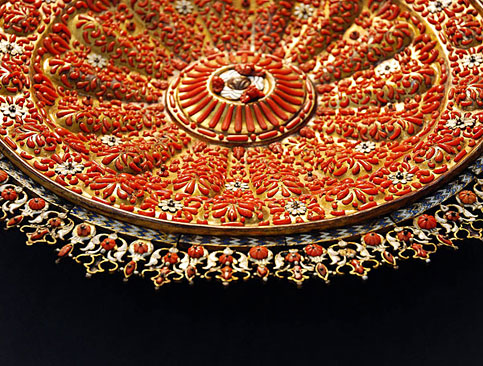The Street of workshops and coral
Via Corallai, a street in the historical centre of Trapani, offers a wonderful perspective of the monumental Saint Francis (‘San Francesco’) church and its dome from its access through Corso Vittorio Emanuele. An observation point that deserves a photo: in just a few metres leading up to Via Serisso, across Via Custonaci, one can interpret the ancient urban layout of the area, the so-called ‘di putieddri’ (workshops), and observe the building style of the houses of the seafarers who lived very near the port area and the rocks outside the city walls. In these streets, including the Via San Francesco, there are still ‘magaseni’, old warehouses which are now garages where fishermen repair their nets. Via Corallai recalls in its name the marvellous works of the goldsmiths and coral engravers that made Trapani one of the Mediterranean and European capitals of the art, between the 1400’s and 1600’s. In the town centre there is also the Via Argentieri (silversmith’s street). It should however be noted, for the sake of historical truth, that despite the name, Via Corallai was not the street where coral was worked, in fact workshops were spread throughout the city. Coral, fruit of the sea and myth, has been for centuries a symbol of Trapani and considered to be the magical amulet that wards off disease. The processing of coral began in the first half of the fifteenth century, initially practiced by few Jewish craftsmen. At the end of the seventeenth century there were numerous shops, no longer related to the original Jewish owners, the production consisted mainly of objects of worship, statues of saints and crucifixes mounted on gilded copper with interlocking spheres, crescents and egg pods, which together constitute Trapani’s typical coral production. “The Coral Mountain” has become a legend: it is said to be the finest work ever created by the coral masters, composed of ninety figures that retraced the life of Christ and the Madonna. Donated by the Viceroy of Sicily to his sovereign, Philip II of Spain, the work was loaded onto a ship that never arrived in Spain. The “Coral Mountain” is, perhaps, still preserved in the depths of the sea. A crisis in 1800 overwhelmed the coral industry. The tradition became popular again in the early twentieth century. With art deco, coral became symbolic of the most prestigious jewellery (Boucheron, Cartier and Van Cleef). Even in the years 1979, 1980, 1981 dozens of boats went “to coral” rediscovering the banks that had made the city famous four centuries earlier: the north sea, the submerged walls of San Vito lo Capo, the rocks of Bonagia, the fringes of the Scherchi banks. A unique collection of coral works by Trapani and Neapolitan artisans dating from the sixteenth to the eighteenth century is preserved in the Pepoli Regional Museum, housed in a fourteenth-century monastery outside the old town, easily reachable by public transport.

